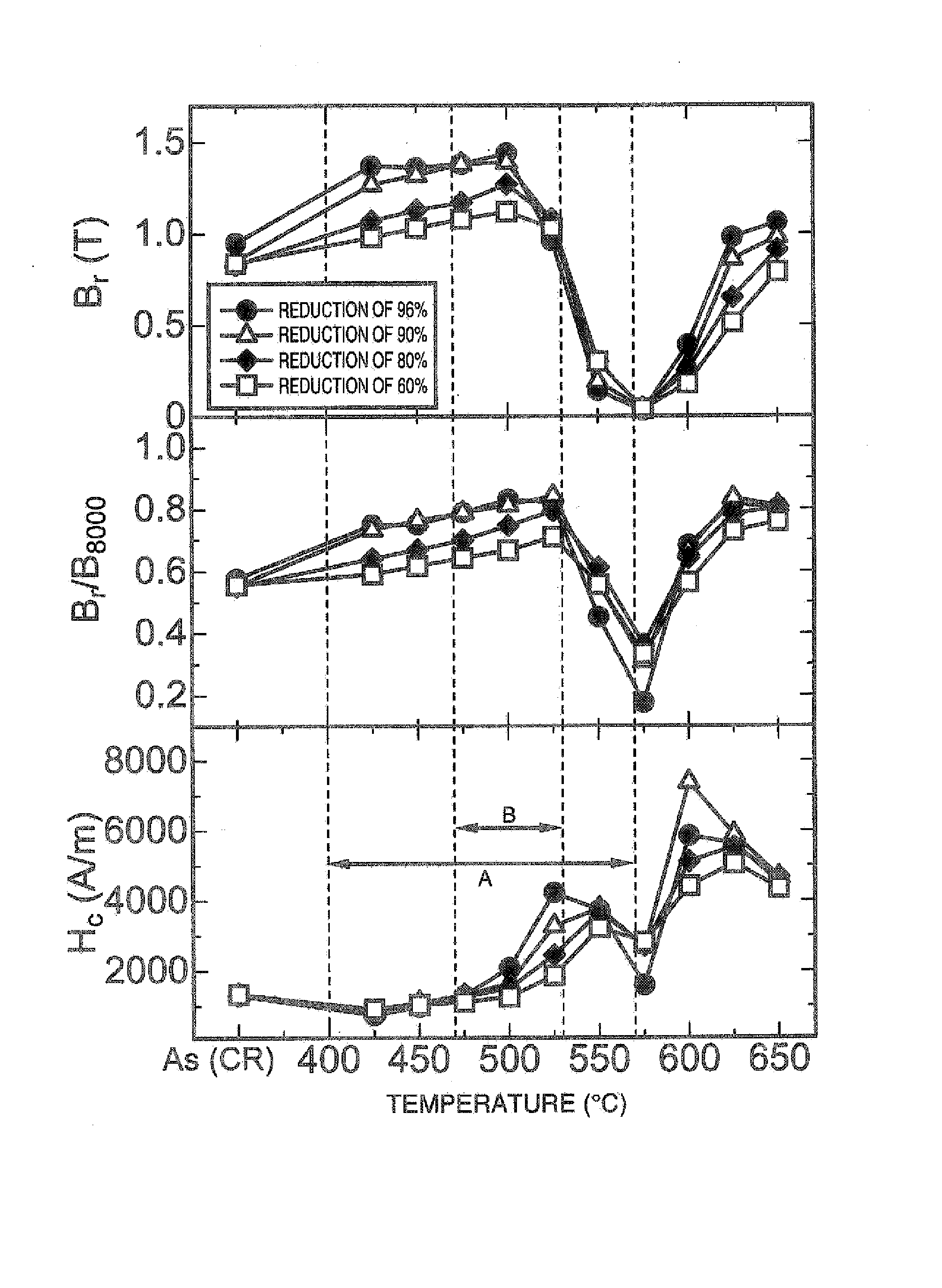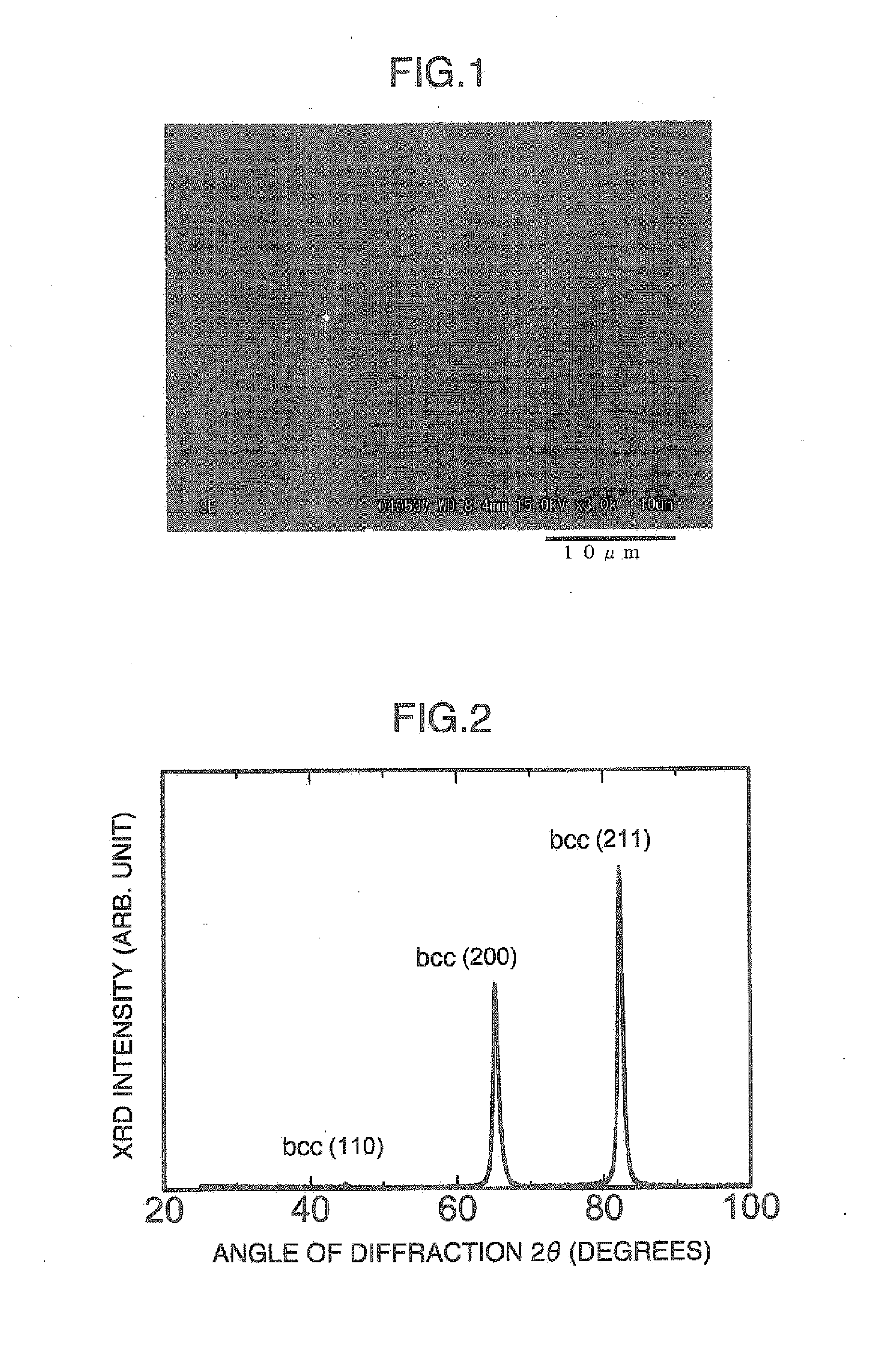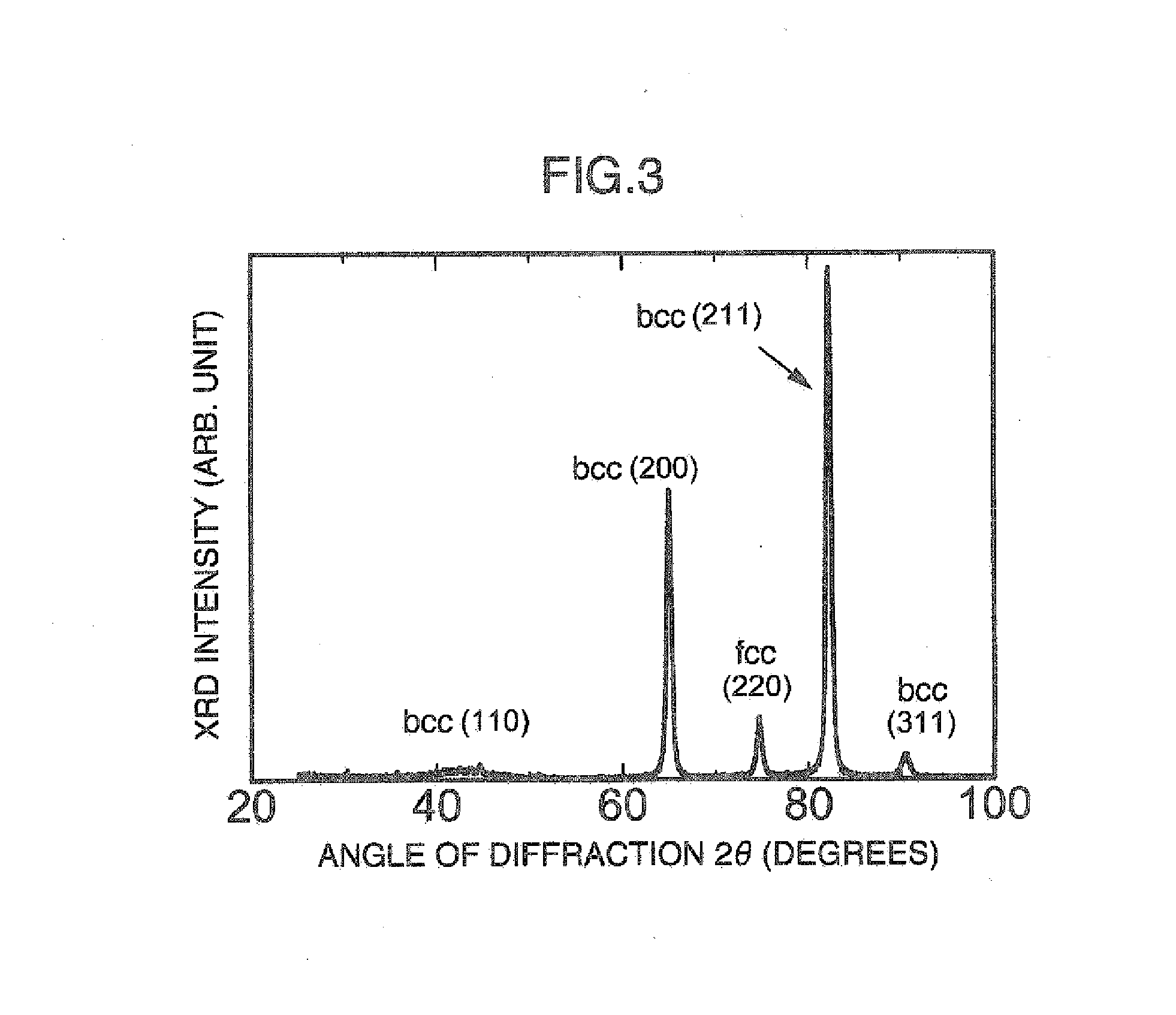Method for manufacturing semi-hard magnetic material and semi-hard magnetic material
a technology of magnetic material and magnetic material, which is applied in the direction of magnetic bodies, heat treatment apparatus, furnaces, etc., can solve the problems of loss of function as crime prevention sensor, small magnetic field given to the magnetostrictive strip in the magnetized state, and difficulty in demagnetization, etc., to facilitate coercive force adjustment, high residual magnetic flux density, and square
- Summary
- Abstract
- Description
- Claims
- Application Information
AI Technical Summary
Benefits of technology
Problems solved by technology
Method used
Image
Examples
example 1
[0103] A semi-hard magnetic material No. 1 was obtained by a vacuum melting using facilities for mass production on an industrial scale, and hot forging at 1100° C. The chemical composition of the material No. 1 is shown in table 1.
[0104] [Table 1]
TABLE 1(mass %)No.CSiMnPSNiMo[O][N]Balance10.0020.290.310.0050.00220.134.141217Fe andinevitableimpurities
Note)
Amount of element enclosed by brackets denotes ppm.
[0105] A semi-hard magnetic material having the composition of No. 1 was subjected to hot rolling at 1100° C., finished to a thickness of 25 mm, further kept in an Ar atmosphere at 830° C. for 1 hour and subjected to air cooling.
[0106] The amount of martensite after hot rolling was 98.8% and the amount of martensite after heat treatment was 99.0%. As for the method of measuring the amount of martensite, it was measured based on the above described integration intensity ratio of the X-ray diffraction peaks. Both metallic structures after hot rolling and after heat treatment were...
example 2
[0136] Based on the result of Example 1, an industrial prototype of a semi-hard magnetic material was manufactured in the following manufacturing processes.
[0137] A raw material for a semi-hard magnetic material was obtained through a vacuum melting using mass production facilities on an industrial scale, and hot forging at 1100° C. After hot rolling on the material at 1100° C. to a thickness of 2.5 mm, the material was subjected to heat treatment in a vacuum furnace. The chemical composition of this semi-hard magnetic material is the same as that shown in Table 1.
[0138] As the heat treatment condition, the material was heated at 830° C., and kept for one hour, and then rapidly cooled by N2 gas. The amount of martensite after hot working was 98.9% and that after heat treatment was 99.0%. The amount of martensite was measured based on the above described X-ray diffraction integration intensity ratios. Both metallic structures after hot rolling and after heat treatment were recrysta...
example 3
[0147] Based on the result of Example 1, an industrial prototype of a semi-hard magnetic material was manufactured in the following manufacturing processes.
[0148] A raw material for a semi-hard magnetic material was obtained through a vacuum melting using mass production facilities on an industrial scale, and hot forging at 1100° C. This raw material was subjected to hot rolling at 1100° C. to a thickness of 2.5 mm. The chemical composition of the semi-hard magnetic material is the same as that shown in Table 1.
[0149] Next, the material was directly subjected to cold rolling at a reduction of 98% without heat treatment to reduce processes, and a plate material having a thickness of 0.05 mm was obtained. It was confirmed that this plate material also had 100% of martensitic structure and an extended structure.
[0150] Specimens were cut out from the plate material as in the cases of Examples 1 and 2. They were then subjected to heat treatment for generating reverse transformed auste...
PUM
| Property | Measurement | Unit |
|---|---|---|
| mass % | aaaaa | aaaaa |
| mass % | aaaaa | aaaaa |
| coercive force Hc | aaaaa | aaaaa |
Abstract
Description
Claims
Application Information
 Login to View More
Login to View More - R&D
- Intellectual Property
- Life Sciences
- Materials
- Tech Scout
- Unparalleled Data Quality
- Higher Quality Content
- 60% Fewer Hallucinations
Browse by: Latest US Patents, China's latest patents, Technical Efficacy Thesaurus, Application Domain, Technology Topic, Popular Technical Reports.
© 2025 PatSnap. All rights reserved.Legal|Privacy policy|Modern Slavery Act Transparency Statement|Sitemap|About US| Contact US: help@patsnap.com



